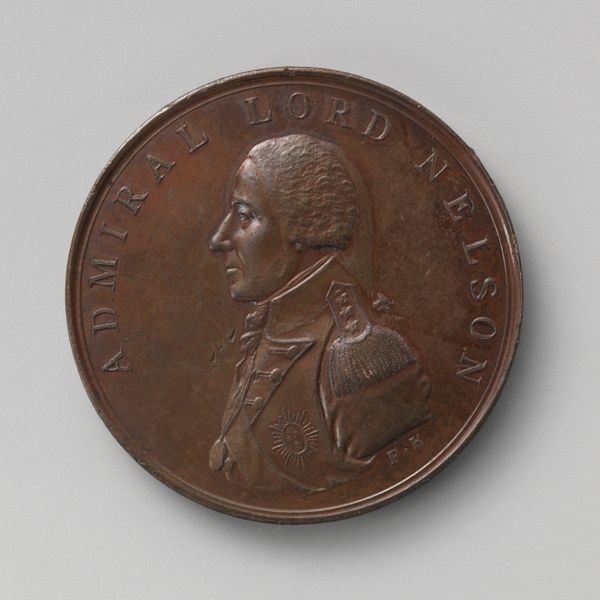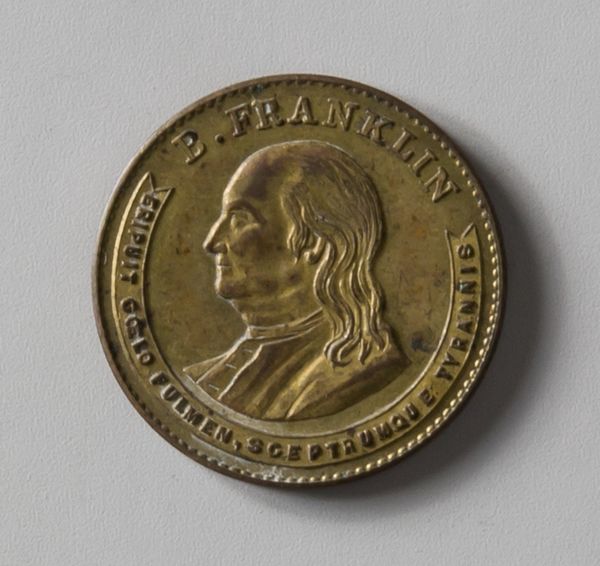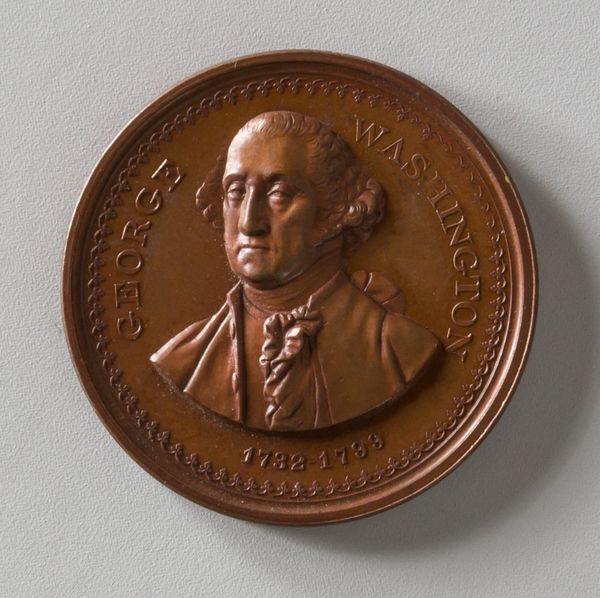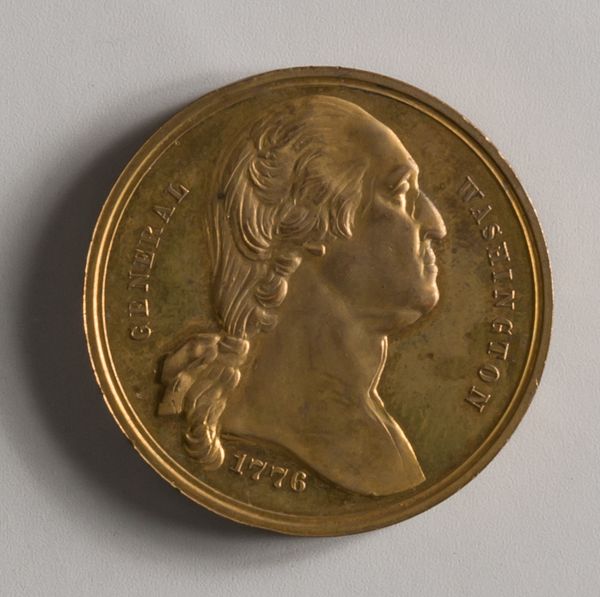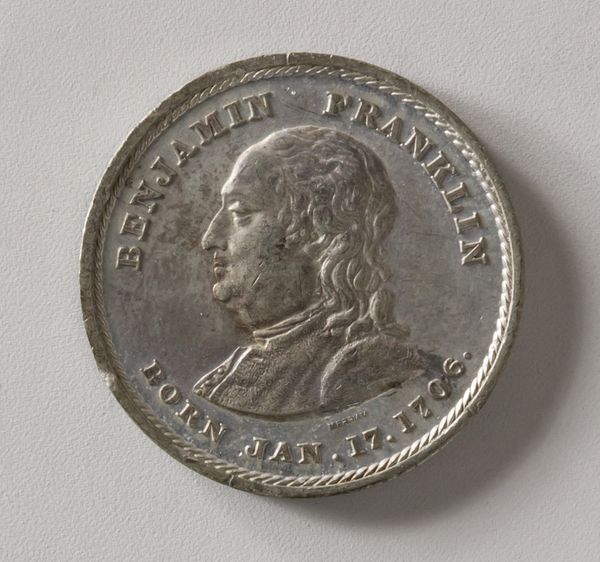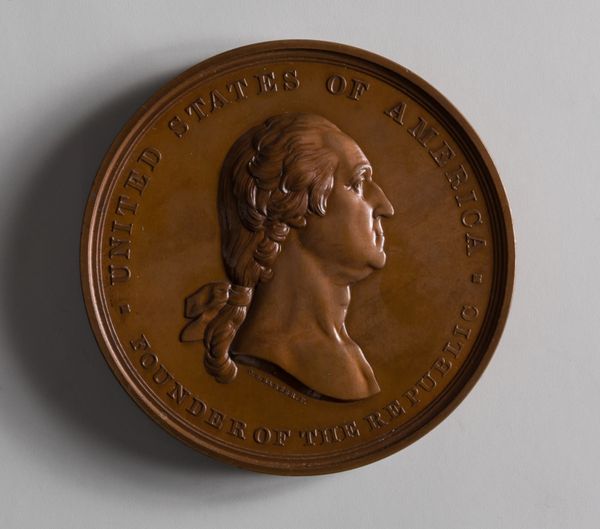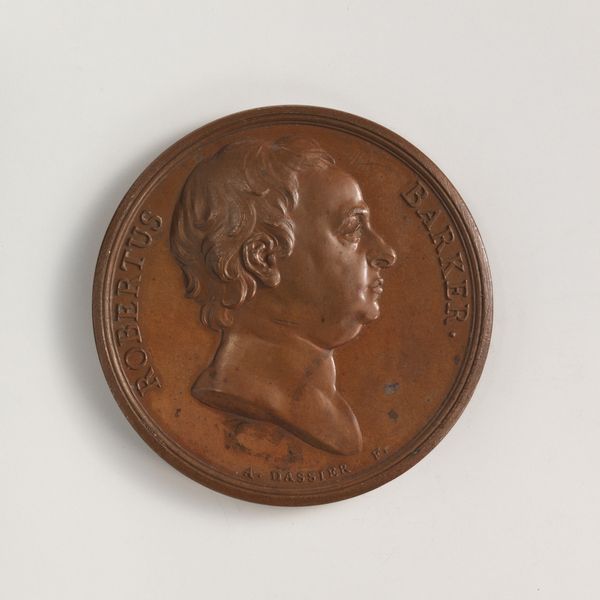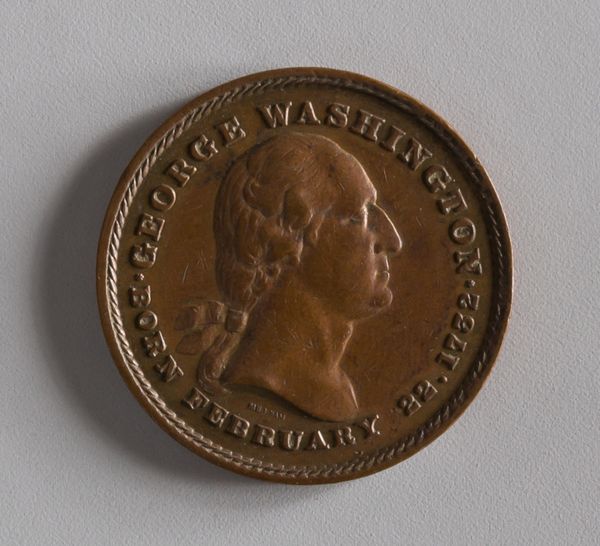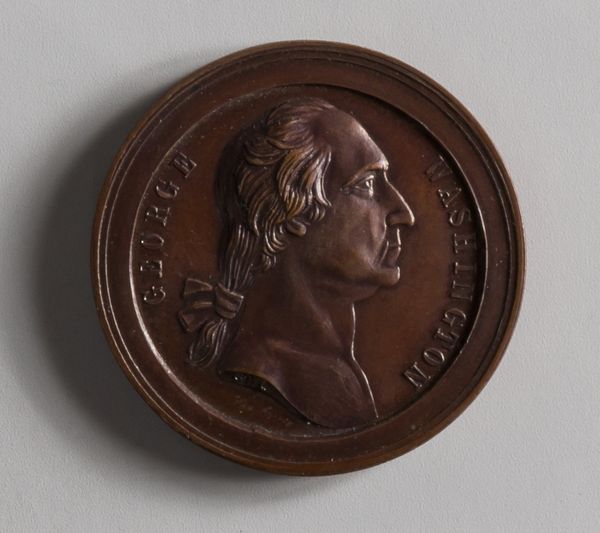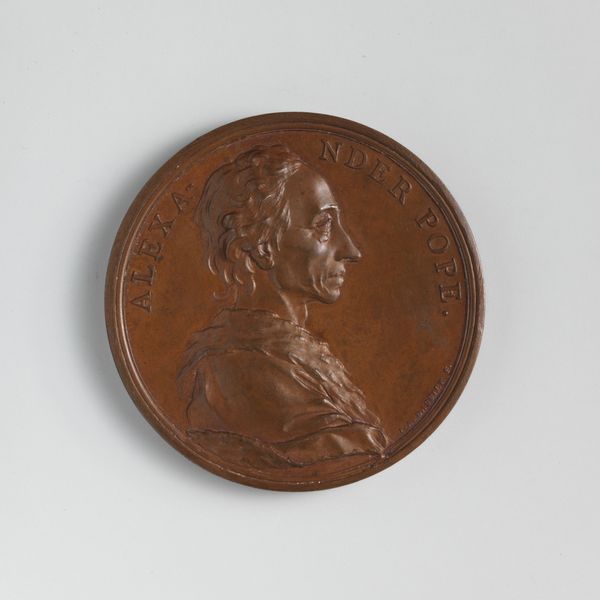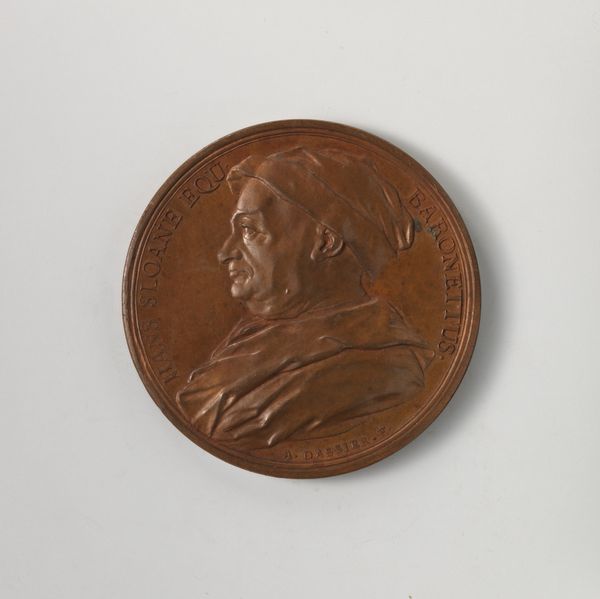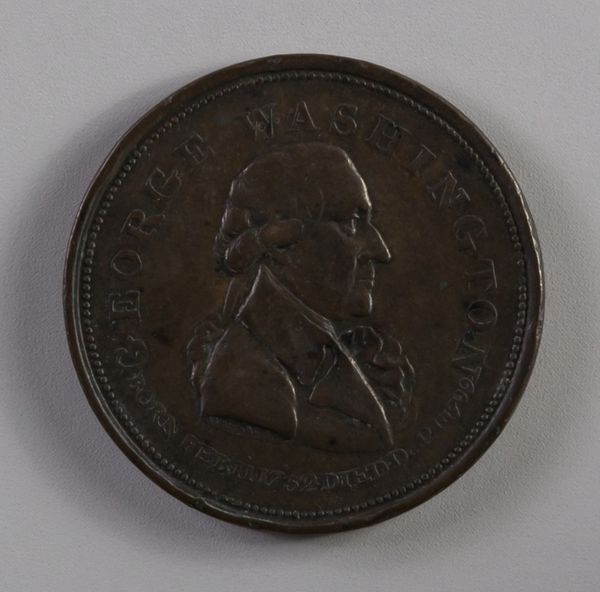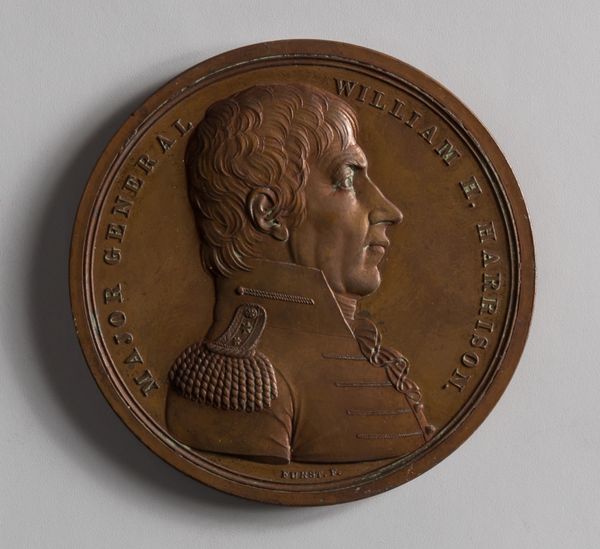
metal, relief, bronze
#
portrait
#
metal
#
relief
#
bronze
#
coloured pencil
#
history-painting
#
profile
#
realism
Dimensions: Diam. 1 3/8 in. (3.5 cm)
Copyright: Public Domain
Curator: Here we have Joseph H. Merriam's bronze relief of Benjamin Franklin, produced in 1859. Editor: Immediately, the tight circular composition strikes me. The low relief emphasizes the tangible nature of memory, almost like handling history itself. Curator: The date of 1859 places it squarely within a period of burgeoning national identity and the romanticization of historical figures. Consider how the imagery of Franklin, the statesman and inventor, served to inspire and perhaps even unify a nation on the brink of Civil War. Editor: And that bronze material! The deliberate choice evokes notions of permanence, monumentality, but also speaks to industry and production, aligning Franklin with the rise of manufacturing and a more tangible, material prosperity. Do you know the production methods that Merriam employed? The piece exudes a strong sense of craftsmanship. Curator: Sadly, the details of Merriam's specific casting process aren’t well documented, though we can assume he was familiar with the standard practices of bronze relief production during that period, using a mold to replicate the design. Franklin as an icon had significant circulation via print; the relief operates similarly, extending his image to the realm of three-dimensional objects. Editor: It's more than an object; it's an accessible emblem. Placing Franklin’s profile within this bounded circular frame feels almost like encasing and codifying his legacy. Notice also the lettering style used for the inscriptions! I would say this lettering feels very academic. How can that observation contribute to your sense of this work? Curator: The use of clear, classic lettering echoes the values of the Enlightenment: reason, clarity, and order – qualities strongly associated with Franklin himself, particularly as promoted by historians of the period and perpetuated in popular memory. His name itself takes on the role of icon as well. Editor: It also hints at the broader material culture— the burgeoning medal-making industry itself and how these sorts of objects were consumed. It's far more about just commemoration— this relief is evidence of industry. The very texture begs to be touched. Curator: Ultimately, the piece is fascinating because it freezes a key figure at a pivotal moment in American self-fashioning. Editor: Absolutely, examining pieces like this can really illuminate the connection between historical narratives, materials, and the creation of national identity through everyday objects.
Comments
No comments
Be the first to comment and join the conversation on the ultimate creative platform.
